Bled - the most beautiful lake of Slovenia!!!!
.jpg)
LAKE BLED - A TOURIST PEARL OF SLOVENIA
Lake Bled (Slovenian, Blejsko jezero) is the most beautiful and most famous lake of Slovenia, a real tourist gem and an absolutely deserved visiting card of the country. Located among forests and rocks, with pure emerald water and a charming little island in the middle, the lake looks almost fairy-tale. Bled is one of the most fashionable holiday destinations in Slovenia. He owned his villa here, among others President Josip Broz Tito (currently a hotel).
Bled is absolutely worth and must see. Due to its unique location and natural conditions, the lake is a perfect destination for lovers of active leisure, while the town will be captivated by people looking for the climate of a mountain resort. The place is also interesting for natural photographers, and any time of the year. Thanks to numerous attractions, the direction can be recommended for a weekend stay, or even a holiday rest.

The history of the lake
Bled is a place with a long history. Settlement existed already in the Mesolithic times. An additional curiosity is that Lake Bled was created in the tectonic basin at the end of the last ice age as a result of the melting of the Bohinjskie Glacier. In the lake, thermal springs have their mouths, which makes the water have a temperature of around 26 ° C. This is not the only asset.
Tourists also come there due to the unusually picturesque surroundings. An inseparable element of the local landscape is m.in. historic church, erected on the tiny islet Blejski Otok, located in the middle of Lake Bled.

Lake Bled At Night!

.jpg)
Frozen Lake Bled!

.jpg)
Amazing Lake Water Bled!
%20(1).jpg)
Birds of Lake Bled!
-Swans
.jpg)
.jpg)
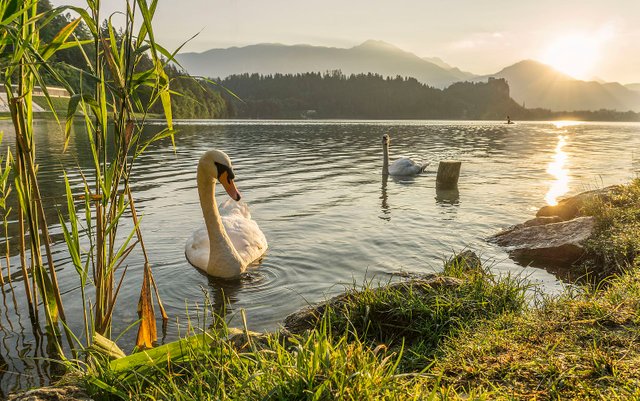
-Ducks

.jpg)
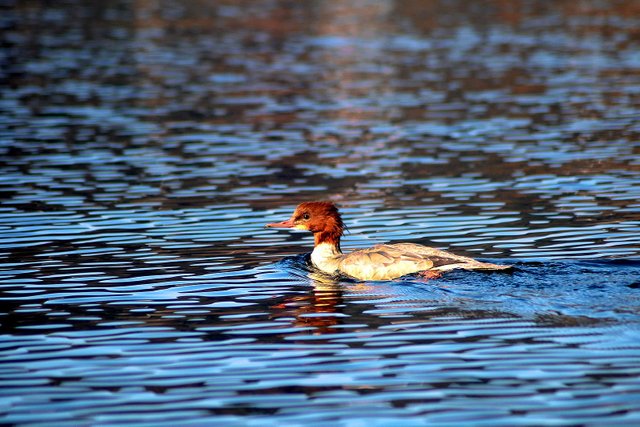
Boats of Lake Bled!



BLED - WHAT IT'S WORTH TO DO AND SEE?
- Bathing in the lake
Thanks to active thermal springs, Bled is one of the warmest alpine lakes with temperatures even up to +26 ° C, so swimming will be an unforgettable adventure. More ambitious swimmers can even try to sail to the island of Blejski Otok. You can also borrow a boat or canoe, there are many rentals of floating equipment by the lake.
- Visit to the Blejski Otok island.
On the island stands the church of Mary Help of Christians, leads to him 99 stone stairs. Tourists are also attracted by a very popular wish bell (from the 16th century). According to the local legend, just pull the rope, if he kills 3 times, our wish will be fulfilled !!! D. Before the Christian period, there was a Slavic temple in honor of the goddess Živa, the patron of love.
You can get to Blejski Otok only by water - by boat or by boat. Traditional boat trips, called "Pletna" (cost 12 Euro per person), are popular.
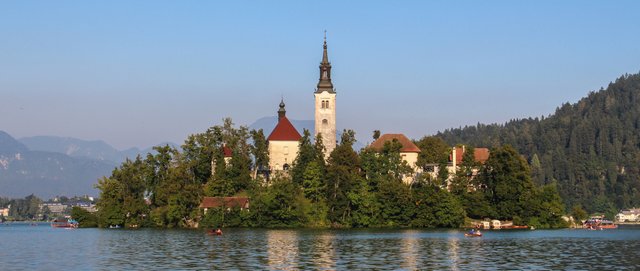
- Bledzki's order and his legends
The castle in Bled is, according to historical records, the oldest castle in Slovenia. The first record about him dates back to 1011, when he was called the Velles castellum. It stands on a magnificent, large rock, rising 130 meters above the lake level.
The history of the castle in outline
In 1004, the German Emperor Henry II gave the estate to Bled, the bishop of Albuin. Then in the area of today's castle there was probably only a tower, which was surrounded by a defensive wall. In the late Middle Ages, further towers were added and fortresses were strengthened. It is interesting to enter through the outer defensive walls with a gothic arch and a drawbridge. The economic facilities were added in the Baroque - at that time the extension of the castle was completed. The facilities are located on two terraces that connect the stairs; on the lower terrace there were outbuildings, on the upper residential. The most interesting is the chapel on the upper terrace devoted to Saint. Bishop Albuin and Saint Ingeuinowi.
-A paradise bird - a find from the sixth century
In the museum at the castle, one of the most beautiful finds from the 6th century AD is exhibited - a peacock brooch, which was found on Pristavi below the castle. The peacock, which beautifies the castle garden, also called the paradise bird, is a symbol of life and wealth.
-Legenda on the widow of Polyksenia!
Around the year 1500, the castle was bought by Hartman Kreigh, who turned out to be a bad and demanding host. The people insisted on him and complained about him. One day, Harman Kreigh went missing without a trace. Legend of the reasons for his disappearance is abundance: according to some, he was kidnapped, and according to others - the population made him lynch. However, Hartman was not overnight, and a lonely widow, Poliksen, remained in the castle. Unfortunately, she also ruled as hard as her missing husband.
The widow, however, was very sad. So she decided to collect all the gold and silver which she kept in the treasury and, as a memento of her husband, ordered the bell to be poured into the chapel on the island. When the beards (people carrying goods on the lake on special boats) carried a bell to the chapel, a terrible storm broke out. She flooded the beards, their boat and the bell. The bell was stuck on the muddy soft bottom of the lake; When storms rage at night, its voice can be heard from the depths of the lake to this day. This made the distraught Poliksena saddened, who left the castle and escaped to the convent in Rome. This story, however, found a happy finale, because the Pope, who had heard about the unhappy history of Poliksen, ordered to cast a new bell and send it to the island.
- Visiting Blejski Gradu
Blejski Grad stands on a high rock above the northern shore of Lake Bled. According to historical data, it is the oldest castle in Slovenia - it was built in 1011, expanded in the 16th century. Currently, there is a regional museum (including a rich collection of armor and weapons from the sixteenth - eighteenth century), or you can visit the castle printing house and cellars. The entrance ticket to the castle costs 10 € (2017).




- Vintgar Gorge
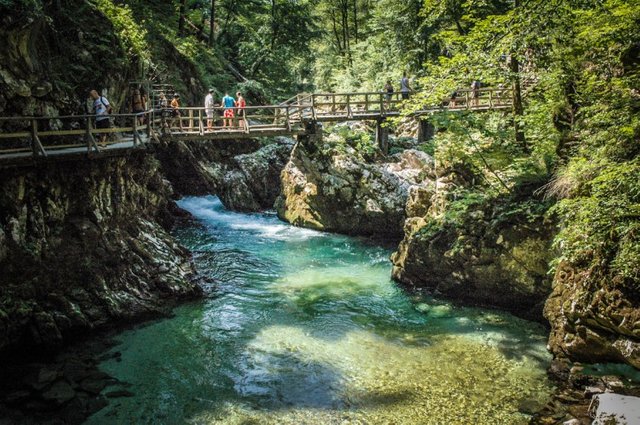
The Vintgar gorge is, due to its unique charm, one of the greatest tourist attractions in Slovenia. Discovered in 1891 by the mayor Gorje Jakob Žumer and the cartographer and photographer Benedikt Lergetporer in his original form was of course extremely difficult to pass and definitely not suitable for commercial use. Fortunately, the Slovenians, who have a unique flair to commercialize their heritage while taking care of the natural environment, have made a real pearl out of the ravine, an absolute top 5 places to see in Slovenia. Wąwóz is located in the immediate vicinity of Gorje, about 4 km northwest of Bled, which means almost in the heart of the Julian Alps. It can be easily reached by car - clear and densely arranged direction plates lead us from the very center of Bled. But there is also the possibility of accessing the so-called 1 € Schuttle Bus, which runs several times a day on the Bled - Vintgar Gorje - Zatrnik route. After the journey, of course, you have to queue. Unfortunately, depending on the time of day, you have to stand out. Certainly in the morning, until noon and just after noon it will be longer, and count up to several hundred meters, but in the second part of the day the queues are practically gone. And, fortunately, all the service goes well, so even if, we will not stay in it for a long time.
The gorge itself was created at the end of the last glaciation, about 10,000 years ago and was sculpted by the Radovna river, which - interestingly - flowed in the opposite direction even before glaciation. It is 1.6 km long and runs between the majestic hills of Hom and Bort. The gorge is also deep, and even very deep. Its walls go up to a height of 50 to even 100 meters, which makes the visitors astonishing. However, the most beautiful views can be found next to us and below us. Visitors have at their disposal a picturesque and strictly marked trail that runs along the river - once along one wall of the ravine, to cut through Radovna and stick to the wall on the other side. Next to us, we can admire various forms carved in a soft layer of limestone Triassic and rich vegetation.



-Pokljuka
Located from 1100 to 1400 m.n. high hall, overgrown with dark spruce forests that interwoven with mountain pastures, called here planins. On the planiny Praprotnica, Uskovnica, Javornik, Kranjska dolina, Lipanca, Zajamniki in Konjuščica, they graze cattle from June to September, and the shepherds can buy fresh milk and cheese. Pokljuka Hall ends with a mountain chain that stretches from Debele peči (2015 m.n.p.m.) through Lipanski vrh (1983 m.n.p.m.), Mali and Veliki Draški vrh (m.n.p.m.) to Tosca (2275 m.n.p.m.). The views in good weather are breathtaking. If you decide to climb one of the peaks or go through the entire chain, we recommend starting in the hostel on Lipanci (1633 m.pn.). In the mountains you can go with a guide or without.
-Jelovica
Jelovica is a hall rising south of Bled, similar to Pokljuka. You can enter it from the side of Radovljica and Lancovo on Talež (710 mnpm), Goško ravan (1000 mnpm - there is a hostel) and Vodiško planino (1108 mnpm) or from the town of Bohinjska Bistrica and the village of Nemški Rovt on Rovtarico (1100 mnpm) or Rakitovec (1672 mnpm).
-Mežakla
Wąski, 1000 to 1300 m.n.p.m. high hill, practically the whole covered with forests. From Bled, you can reach it on the forest path from the village of Gorje through Laze to Ravne (960 m.n.p.m.). Good sights and easier approaches are also Jerebikovec (1593 m.n.p.m.) and Planski vrh (1299 m.n.p.m.).
-Izvoščki - "fijakerji", which is the equivalent of a Polish carriage
-Izvoščki or "fijakerji" will take you on a trip around the lake and the castle. If you want to have a few routes to explore the area - from the Vintgar gorge, through the village of Gorje, Podhom and Zasip or through Mlino, Selo, Ribno, Bodešče in Koritno, also to the golf park or to the town of Šobec. And even to the villages of Begunj and Drage, Krope or the city of Bohinj.
-Traditional cruise on the Bled islet by a boat called "Pletna"
Being in Bleda you have to call a wish bell. The easiest way to get to the islet is a traditional boat - Pletna. A half-hour stop on the island is included in the pleasant lake cruise (when renting the entire Pletna, the length of the stay is negotiable). Pletnarze (in Slovene pletnarji) are waiting for tourists in the thermal park (Zdraviliški park), in front of the Park hotel, on the so-called Mlinem and in the rowing center.
-Kremne rezine, kremšnite, or fondant cream
The symbol of blinski kulinaryka are kremówki, known here for several decades. Of course, fondant in Slovenia can be bought almost anywhere, but they say that real, bland, are only here. The master of confectionery working at the Park Hotel bakery, Ištvan Lukačevič, created a recipe that is still used today. You will ask what the secret is - and they say it is just an experience that is not lacking in Bleda. In the last 40 years, they sold 7 million creams here. And this is a cookie with the bottom of golden puff pastry butter over a layer of vanilla cream, which must have the right consistency to be light, but not "get out" during cutting, covered with sweet whipped cream and a second piece of cake. And how to resist them here?
Other attractions to visit in Slovenia!
- Triglav - the highest mountain of Slovenia and the Julian Alps. Its majestic northern wall, over 1000 m high and 3000 m wide, is one of the most powerful rock walls in the entire Alps. Triglav is also the holy mountain of the Slovenians and an extremely popular tourist destination, in the summer season it is crowded, and whole family groups enter its peak. The image of the mountain is in the state emblem. Father Jakob Aljaž had great merits in popularizing tourism, and in 1889 he bought the top of the mountain to stay in Slovenian hands. On his initiative, a round metal tower was set on the top, so-called Aljažev Stolp (Tower of Aljaża) and a shelter was built - Triglavski dom na Kredarici (2515 m).
The name Triglav is associated with Slavic beliefs from the early Middle Ages. According to them, the mighty Trzygława - the pagan god of water, earth and the underworld - had its seat.
 Triglav in the first rays of the sun.
Triglav in the first rays of the sun.
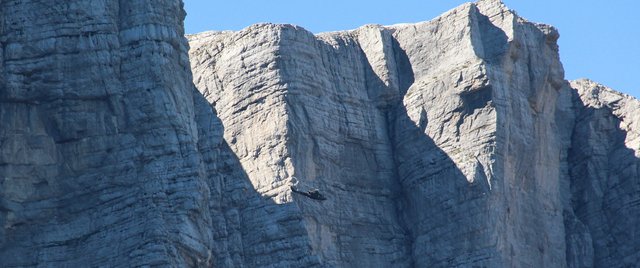 Triglav and his famous northern wall, a helicopter on its background.
Triglav and his famous northern wall, a helicopter on its background.
 Tower of Aljaja.
Tower of Aljaja.
 Triglavski house on Kredarici (2515 m) and Triglav (2864 m)
Triglavski house on Kredarici (2515 m) and Triglav (2864 m)
- Mangartska Droga (Slovenian: Mangrtska Cesta) - the highest road in Slovenia - a paradise for cyclists and motorcyclists, a road of fear for drivers of "wider" vehicles, especially during the passing on the bend :). But absolutely worth it! We recommend! And for emotions and for views :). On the section of less than 12 km, we overcome 980 m surplus, we pass through five carved tunnels in the rock, innumerable serpentines and suspended over the precipice of bends. During the journey, we are always accompanied by the majestic silhouette of Mangart (2679 m), the third highest peak of Slovenia and the panorama of the Julian Alps.
A perfect complement to the trip is to get to the Mangart peak, from the Mangart Pass we have the opportunity to get this beautiful mountain in several ways. We have two ferrats and a high-altitude path at our disposal. A trip to the Mangartska pass is worth combining with a stay at the Italian post-glacial lake Predil, with beautiful emerald-green water surrounded by high mountain peaks.
 Mangartska road.
Mangartska road.
 View from the Mangart Pass.
View from the Mangart Pass.
 View from the Mangart Pass, on the left Mangart (2679 m).
View from the Mangart Pass, on the left Mangart (2679 m).
3.Ruska Droga (Slovenian: Ruska cesta) - one of the most interesting and most spectacular roads in the whole of Slovenia - on the section of 24 km there are as many as 50 sharp serpents - numbered and described in height, which is an additional attraction for travelers. The road is very popular among motorists (cars, motorcycles), as well as among cyclists, there is a real crowd in the summer season. Ruska The road begins in the small town of Kranjska Gora passes through the Vršič Pass at a height of 1611 m and continues to the village of Trenta. It was built in 1915-1916 as a strategic military route. It is open on average for 7 months a year - in winter it is completely closed for traffic.
The passage through Vršič was known and has long been used by people from Trent who went to Kranjska Gora or Villach. During the First World War, the Austro-Hungary considered the route as very important militarily and in 1915 they started the construction of a military road. They used 10,000 Russian prisoners for the work. It was not without sacrifices, in March a huge avalanche killed over 100 people - prisoners and several Austrian guards, altogether 380 prisoners died during the construction of the road. To commemorate the accompanies, the Russians built a chapel in 1916 - Ruska kapelica on Vršič. It is located just off the main road, going from Kranjska Gora at an altitude of about 1200 m.
Coming to Vršič, it is worth stopping at one of the car parks and taking a look at the surrounding peaks, especially one is worth attention - Prisojnik (Prisank, 2547 m) with a characteristic, clearly visible even from a distance, window. But what really is worth attention is the unusual rocky picture below the windows - The so-called Ajdovska Deklica (Ajdovska Dziewica) is another, next to Zlatoroga, visiting card of the Triglav National Park.
 One of the corners of the Ruska Droga.
One of the corners of the Ruska Droga.
 Ruska chapel on Vršič.
Ruska chapel on Vršič.
 Prisojnik (2547 m) with a characteristic window and rock "picture" - The so-called Ajdovska Deklica (Ajdovska Virgin).
Prisojnik (2547 m) with a characteristic window and rock "picture" - The so-called Ajdovska Deklica (Ajdovska Virgin).
4.Kranjska Gora - famous ski resort of Slovenia. The world cup competition in alpine skiing takes place there. But in the summer the town also has several attractions, including lake Jasna (Slovenian Jasna jezero), located at the confluence of the rivers Mala and Velika Pisnica (these are two artificial reservoirs connected with each other). The area around Jasna is ideal for families with children: there are quite a few charming walking paths and a huge river bed that can serve as a large stone "sandbox".
The Zlatoroga monument stands on the lake - a symbol of the Slovenian Julian Alps.
 Clear Lake.
Clear Lake.
5.River of Socha. Socza (Slovene: Soča, owner: Isonzo) flows from the Julian Alps (Trent) and flows into the Gulf of Venice. And not without reason it is considered one of the most beautiful rivers of Slovenia. The view of mountain water, with numerous cascades, in a beautiful turquoise color against the background of raw, white rocks seems almost unreal. You can see for yourself, in a few places at the edge of the table and benches are set, it is worth stopping here for a rest or a picnic. You can also go for a longer, approx. 20 km. a trip on the educational path "Soška Pot" - from the source of the river in Trencie (beginning at Koča pri Izviru Soče) to Bovec. However, those looking for stronger experiences can try for example rafting or paragliding - the big center of extreme sports is Bovec.
As a curiosity, it should be added that in 1500 plans were made to fortify the river in the event of a Turkish invasion - this task was entrusted to Leonardo da Vinci himself.
During World War I, very fierce battles between the Italian and Austro-Hungarian armies (11 battles) fought in the Soczy river valley. Despite almost double the number and armed superiority, Italians were defeated. Tens of thousands of soldiers died, which is why Socza is often referred to as the "second Verdun".

6.Vrata Dolina - a place well-known to tourists who win Triglav with the most difficult roads, ie ferrata: "Tominškova pot", "pot čez Prag" and "pot čez Plemenice". There are also routes to the surrounding mountains: Škrlatice and Stenara, as well as climbing routes on the famous northern wall of Triglav.
The valley is also worth visiting for recreation and for several reasons. Above all, for the beautiful waterfall called "Slap Peričnik" - which consists of two towers of water cascades: the lower one is Spodnji Peričnik (52 m) and the higher one is Zgornji Peričnik (16 m). Behind the waterfall there is a rock grotto. You can go around the tourist path around it.
At the end of the valley stands the Aljažev Dom hostel - beautifully presented against the background of the sacred Slovenian mountain. Nearby is a monument of mountain partisans from the period of the First World War, has the shape of a climbing hook with a carabiner, driven into a rock block.
The Vrata Valley is located in the Triglav National Park. It begins in Mojstrana, a village associated with priest Jakob Aljaž, who had tremendous merits in popularizing mountain tourism (in 1889 he bought the summit of Triglav to make the summit in Slovenian hands). In English Slovenian "vrata" means "door" - which can be understood as a symbolic invitation to enter the trail on Triglav (2864 m above sea level).
 Hostel Aljažev House, in the background Triglav.
Hostel Aljažev House, in the background Triglav.
 Monument to mountain partisans from the First World War.
Monument to mountain partisans from the First World War.
- Zlatorog - an immortal white capricorn with golden horns, a symbol of the Slovenian Julian Alps. It is associated with one of the most popular Slovenian legends about love, greed and betrayal. And it was this: in ancient times, the Valley of the Triglav Jezer was a beautiful land, and the people who lived in it were very happy in the care of Złotorog. Once, a rich Venetian merchant was passing through Trent. He liked the beautiful daughter of the lager so much that he promised her parents a bag of jewels for the girl's hand. Because she was already engaged to a poor hunter Janez, her mother demanded from a boy in love that she would bring a bouquet of Triglav roses or the golden horn of a capricorn in evidence of her love for her daughter. And as the season was winter, Janez did not have a chance to find flowers, so desperate he set off to the golden horns of the ibex. He found and shot to Złotoroga. The wounded capricorn managed to escape, but in a place where the flowers of the triglav rose were bleeding. Janez, blinded, rules their capture, fell from a high cliff, his body was brought only in spring by the river Soča. Złotoróg for punishment destroyed the beautiful valley and forever left the Julian Alps.
 Zlatorog on Lake Jasna (Kranjska Gora).
Zlatorog on Lake Jasna (Kranjska Gora).
 Zlatorog - Bohinjskie Lake.
Zlatorog - Bohinjskie Lake.

This user is on the @buildawhale blacklist for one or more of the following reasons:
Congratulations @maciej66! You received a personal award!
You can view your badges on your Steem Board and compare to others on the Steem Ranking
Do not miss the last post from @steemitboard:
Vote for @Steemitboard as a witness to get one more award and increased upvotes!